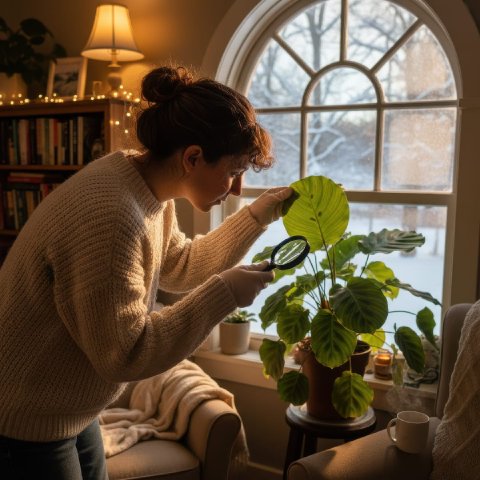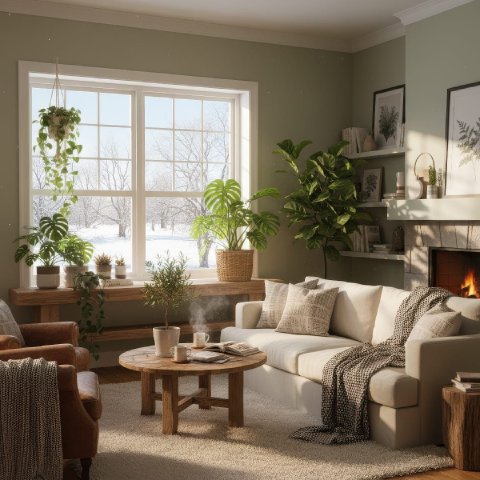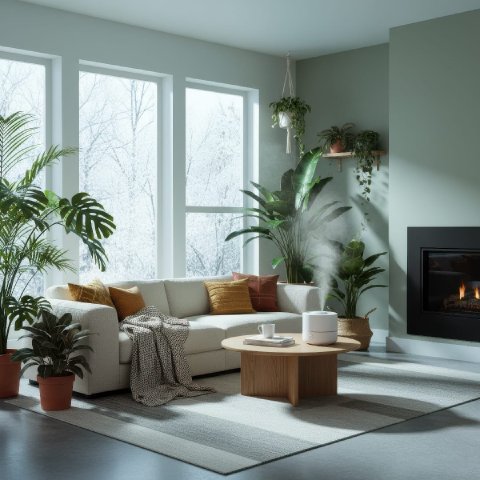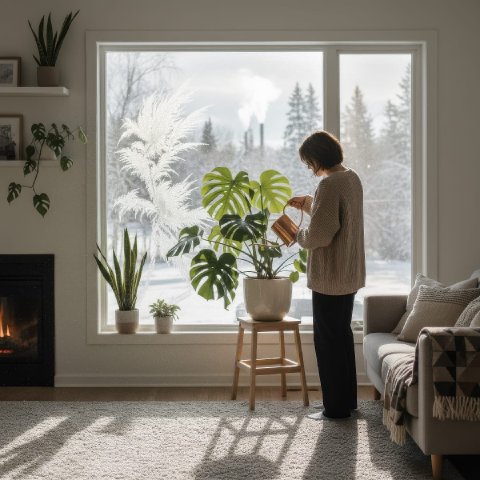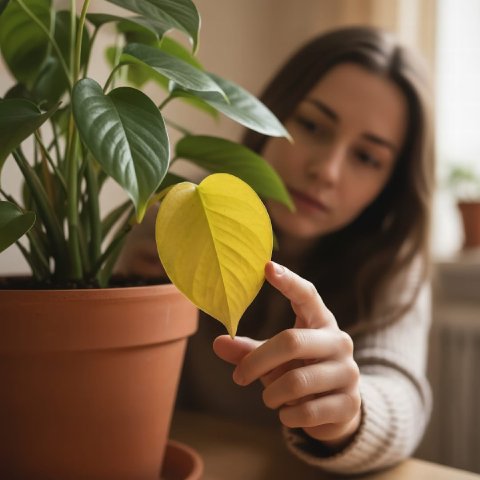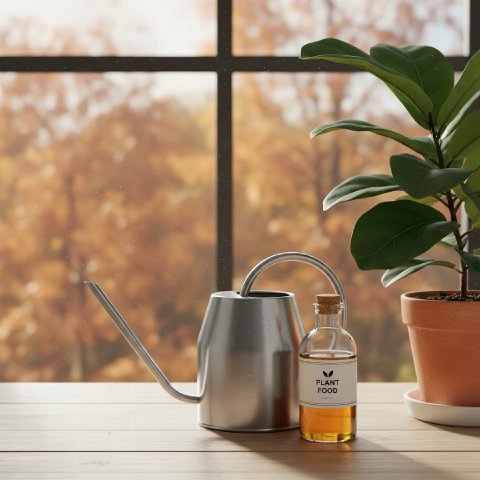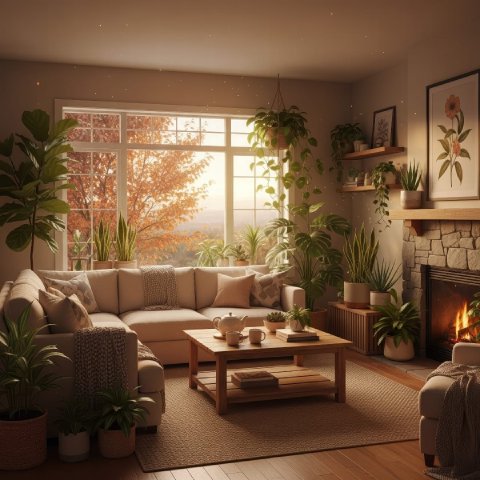🪴 In This Guide 🪴
☀️ Making the Most of Natural Light
Before you even think about artificial solutions, the first step is to optimize the natural light your home receives. You’d be surprised how much of a difference a few small adjustments can make.
Relocate and Reposition
That spot a few feet from the window that was perfect in June might be a dark corner by October. The sun’s path is lower and shorter, so it’s time to move your plants. Gather them closer to your brightest windows-typically south-facing ones are best in the Northern Hemisphere. Don’t be afraid to put them right on the windowsill; the autumn sun is rarely strong enough to scorch their leaves.If you’ve just brought plants indoors, reduce shock by following Preparing Houseplants for Winter.
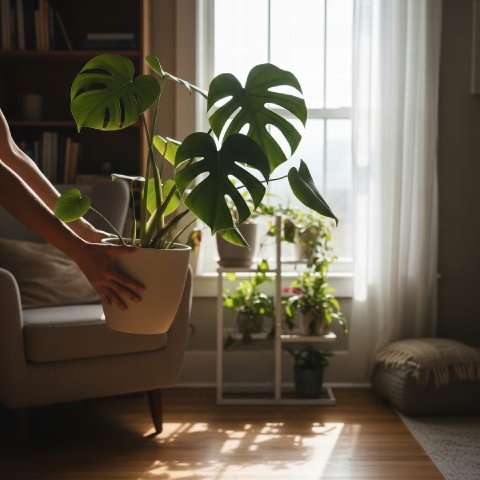
Clean Your Windows and Leaves
It might sound trivial, but clean surfaces let more light through. A layer of dust and grime on your windowpanes can significantly filter the already limited sunlight. The same goes for your plants’ leaves. Dust accumulation blocks their ability to photosynthesize. Gently wipe down larger leaves with a soft, damp cloth to help them soak up every available ray.Rotate Regularly
Plants are phototropic, meaning they grow towards their light source. To ensure even growth and prevent them from leaning heavily in one direction, give them a quarter turn every time you water.💡 Supplementing with Grow Lights
For those with north-facing windows, very little direct sun, or plants that demand high light (like succulents), a grow light is a game-changer for the darker months.
You Don't Need a Science Lab
The term “grow light” can sound intimidating, but it doesn’t have to be complicated or expensive. For most houseplants, a simple full-spectrum LED bulb is all you need. You can find these bulbs online or at garden centers, and they are designed to screw into standard desk lamps or light fixtures. They are energy-efficient and provide the quality of light your plants crave.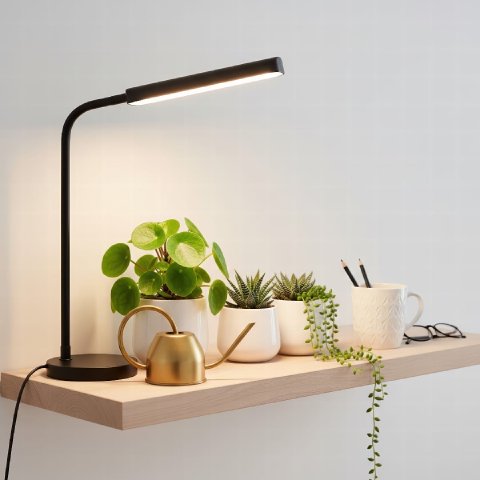
How to Use Your Grow Light
Position the light directly above the plants, about 6 to 12 inches away from the foliage. Keep the light on for 12-14 hours a day to mimic a natural light cycle. Using an automatic timer is the easiest way to ensure consistency. Remember that plants also need a period of darkness to rest, so don’t leave the light on 24/7.If leaves still yellow after improving light, check Common Autumn Houseplant Problems.
⚠️ Signs Your Plant Needs More Light
Your plant will tell you if it’s not getting enough light. Keep an eye out for these common symptoms:
- Leggy Growth: Long, stretched-out stems with sparse leaves.
- Small, Pale Leaves: New leaves may be smaller than usual or a lighter green color.
- Leaning: The entire plant may bend dramatically towards the window.
- Loss of Variegation: The colorful patterns on variegated leaves may fade or disappear.
- Yellowing Leaves: Lower leaves may turn yellow and drop off as the plant sheds what it can no longer support.
If you see these signs, it’s a clear signal to move your plant to a brighter location or add a supplemental grow light. Also adjust frequency with autumn watering and fertilizer as growth slows.
